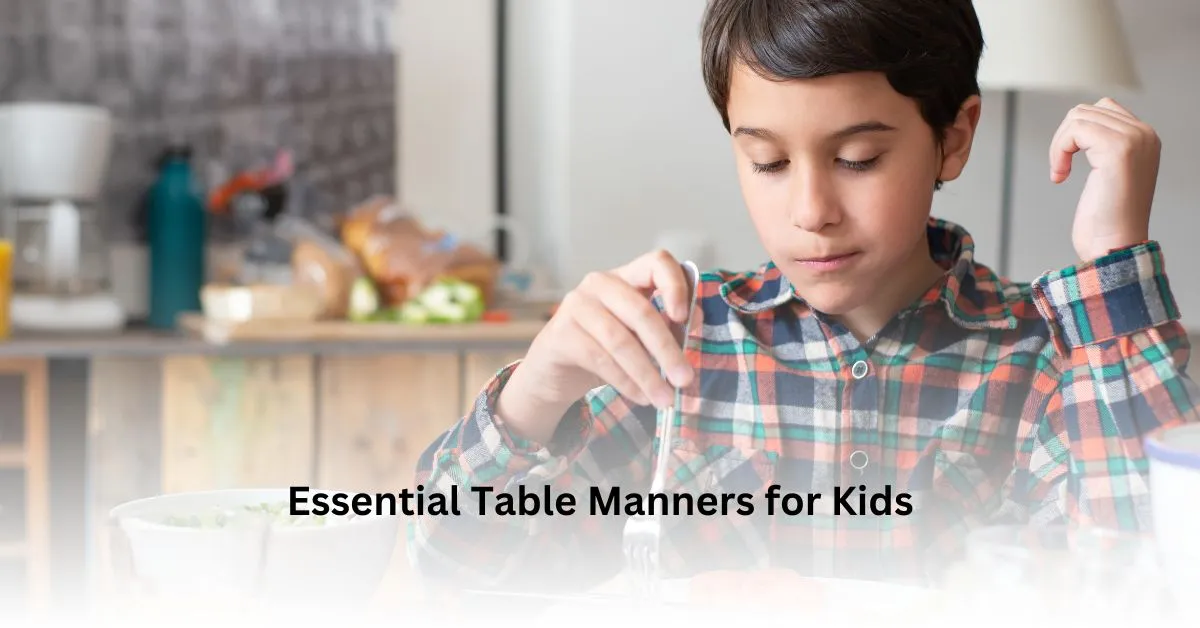Teaching table manners to kids is an essential aspect of their upbringing, contributing significantly to their social development and overall character formation. In today’s fast-paced world, where distractions abound and interpersonal interactions can sometimes take a back seat to technological devices, instilling proper table manners in children is more critical than ever. This introduction will delve into the importance of imparting table manners for kids and provide an overview of the manifold benefits that arise from nurturing good manners in children.
Importance of Teaching Table Manners to Kids
Table manners for kids hold a pivotal role in shaping their behavior, attitudes, and interactions with others. Beyond simply knowing which fork to use or how to hold a napkin, table manners encompass a broader spectrum of social etiquette that instills respect, consideration, and mindfulness in children. By teaching kids the art of dining etiquette, parents and caregivers equip them with invaluable life skills that extend far beyond the dinner table.
When children learn proper table manners for kids, they not only demonstrate respect for those around them but also develop a heightened awareness of social cues and expectations. Understanding the importance of waiting turns to speak, using utensils correctly, and engaging in polite conversation fosters a sense of empathy and consideration for others’ feelings and needs. Moreover, mastering table manners for kids instills a sense of confidence and self-assurance in children, enabling them to navigate various social settings with grace and poise.
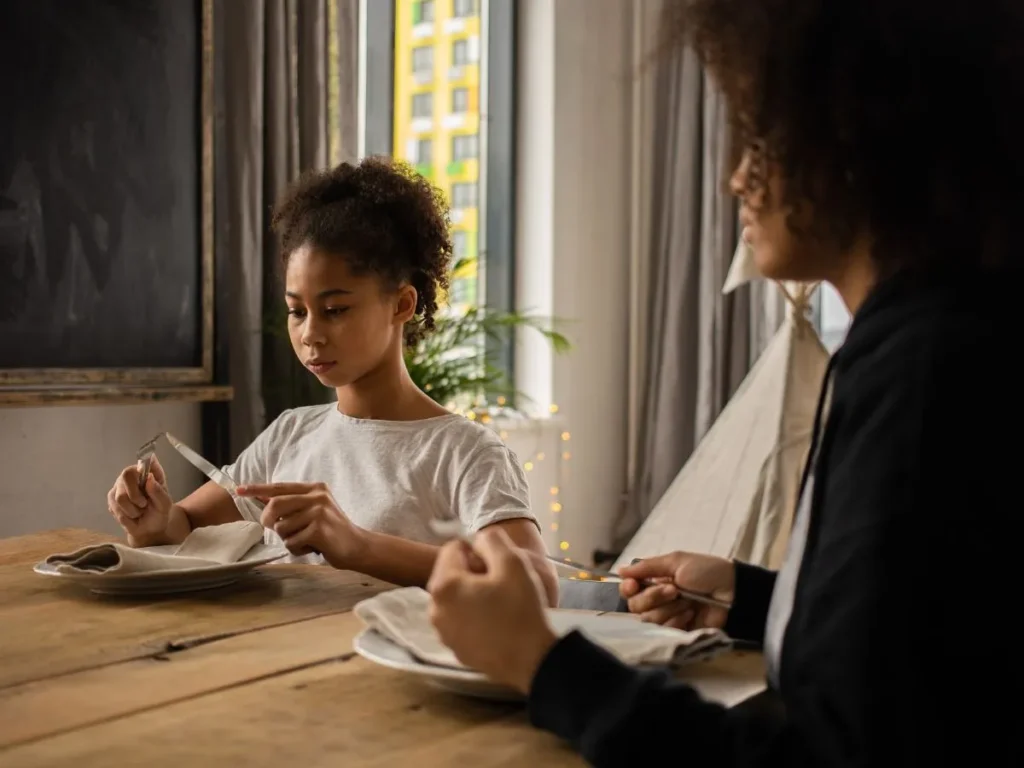
Benefits of Table Manners for Kids
The benefits of instilling good manners in children extend well beyond the realm of social niceties, influencing various facets of their personal and interpersonal development. By cultivating a culture of respect and courtesy, children who possess good manners are more likely to build positive relationships with peers, teachers, and authority figures. They exhibit empathy, kindness, and consideration in their interactions, earning the admiration and respect of those around them.
Furthermore, children who are adept in table manners for kids often excel in academic and professional settings, where social skills play a crucial role in collaboration, leadership, and teamwork. Employers and educators alike value individuals who demonstrate professionalism, courtesy, and respect, traits that are cultivated through the practice of good manners from a young age. As such, investing time and effort in teaching table manners to kids is not only beneficial for their immediate social interactions but also lays the groundwork for their future success and fulfillment.
Why Are Manners Important?
Table manners for kids are not merely a set of arbitrary rules dictating how to behave at the dinner table; they serve as fundamental principles that shape a child’s character and guide their interactions with others. In this section, we’ll explore three key reasons why manners are important, emphasizing how they contribute to the development of children’s social skills, respect for others, and the cultivation of positive relationships.
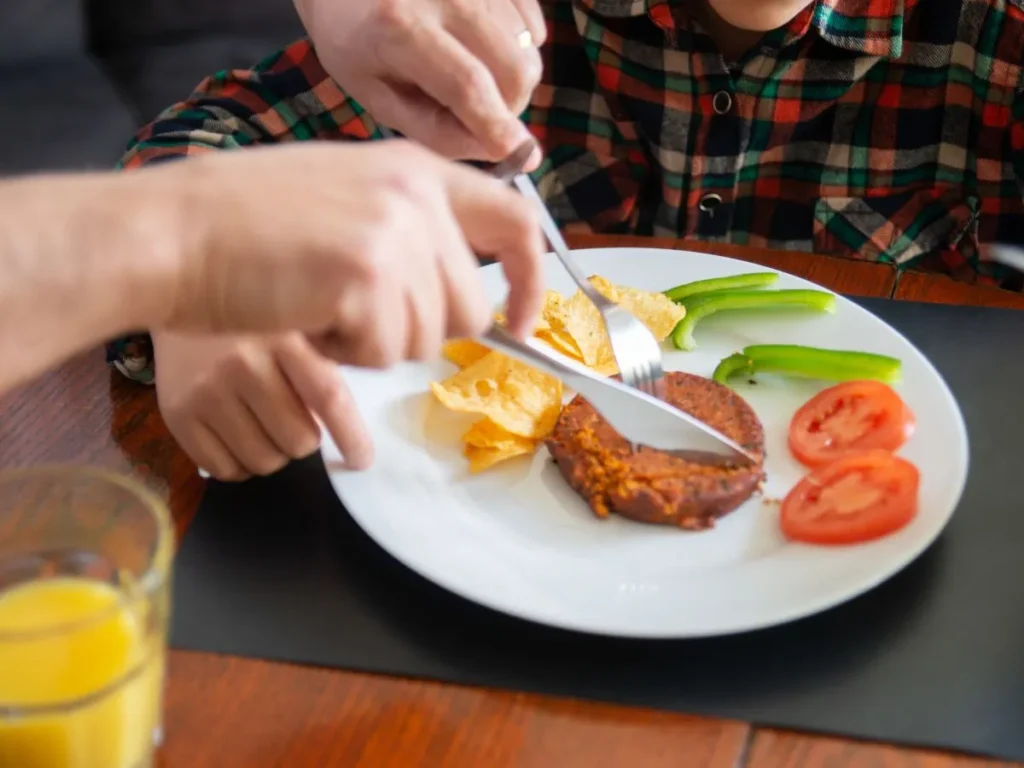
Setting the Foundation for Social Interactions
Table manners for kids serve as the building blocks for successful social interactions. From a young age, children are taught the importance of saying “please” and “thank you,” waiting their turn to speak, and showing consideration for others’ needs. These basic manners not only make social interactions more pleasant but also lay the groundwork for more complex social skills later in life.
By instilling good manners in children, parents and caregivers equip them with the tools they need to navigate various social situations confidently. Whether it’s attending a family gathering, dining out with friends, or participating in school activities, children who have a solid understanding of table manners for kids are better prepared to interact with others respectfully and appropriately.
Demonstrating Respect for Others
One of the core principles underlying table manners for kids is respect for others. Teaching children to wait their turn, listen attentively, and consider the needs of those around them fosters empathy and compassion. When children exhibit good manners at the dinner table, they demonstrate their respect for their dining companions and show appreciation for the effort that goes into preparing and serving a meal.
Moreover, practicing good manners teaches children to recognize and value the contributions of others. Whether it’s complimenting the cook on a delicious meal or helping to clear the table after dinner, children who understand the importance of table manners for kids are more likely to show appreciation for the efforts of those around them.

Fostering Positive Relationships
Table manners for kids play a crucial role in fostering positive relationships with family members, friends, and peers. When children practice good manners, they create an atmosphere of mutual respect and consideration that strengthens their bonds with others. Sharing a meal together becomes more than just a mundane activity; it becomes an opportunity to connect, communicate, and build meaningful relationships.
Furthermore, children who exhibit good manners are more likely to be viewed positively by others, leading to increased opportunities for social interaction and collaboration. Whether it’s making friends at school, impressing a teacher with their politeness, or earning the respect of their peers, children who embody the principles of table manners for kids are better equipped to navigate the complexities of social relationships.
What Are the Benefits of Good Manners for Kids?
Teaching table manners for kids goes beyond the mere act of proper dining etiquette; it instills a set of values and behaviors that contribute to their overall development and success in life. In this section, we will explore the numerous benefits that arise from nurturing good manners in children and how they positively impact various aspects of their lives.
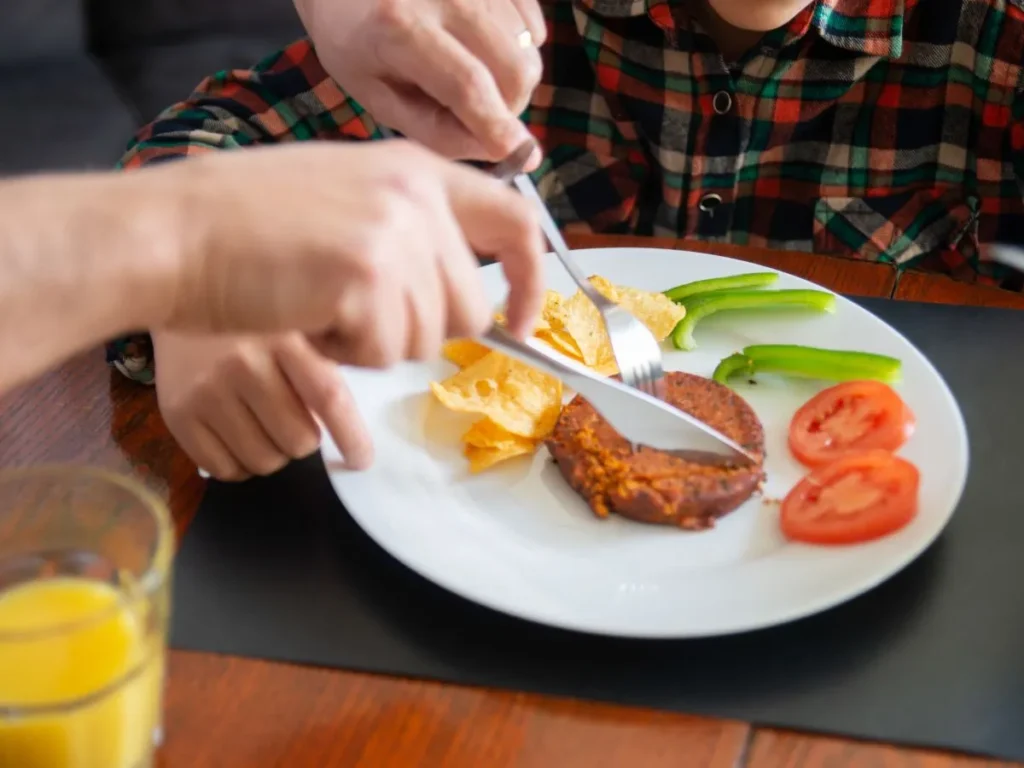
Enhanced Social Skills
One of the primary benefits of instilling good table manners for kids is the enhancement of their social skills. When children learn to behave appropriately at the dinner table, they are better equipped to navigate social situations with confidence and ease. By understanding the importance of waiting turns to speak, using utensils correctly, and engaging in polite conversation, children develop the necessary skills to interact respectfully with others. These social skills extend beyond the dining table and are applicable in various settings, such as school, extracurricular activities, and future workplaces. By practicing good manners, kids learn to communicate effectively, resolve conflicts peacefully, and build meaningful relationships with their peers and adults.
Improved Self-esteem and Confidence
Good table manners for kids also play a significant role in boosting their self-esteem and confidence. When children exhibit proper manners, they receive positive reinforcement and recognition from others, which contributes to their sense of self-worth and validation. Moreover, mastering table manners instills a sense of pride and accomplishment in children as they become proficient in demonstrating respect and consideration for others. This newfound confidence translates into other areas of their lives, empowering them to take on challenges, express themselves assertively, and pursue their goals with determination.
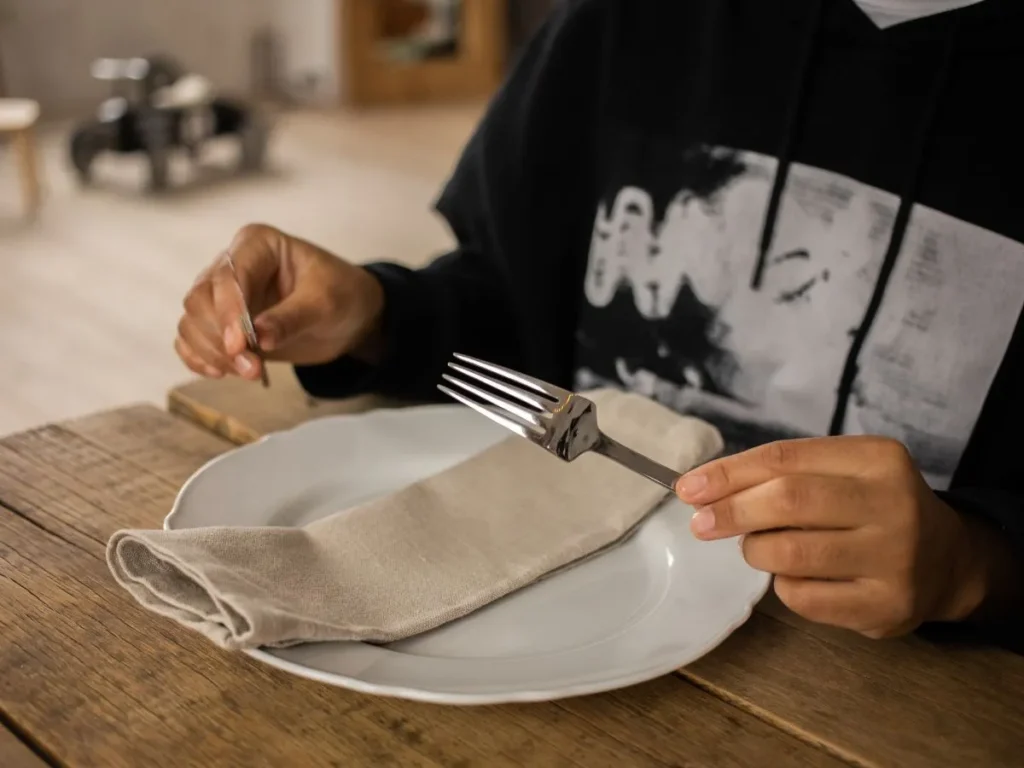
Better Opportunities for Success in Various Situations
Another compelling benefit of teaching table manners to kids is the creation of better opportunities for success in various situations. Children who possess good manners are more likely to make favorable impressions on others, whether it be teachers, peers, or potential mentors. By demonstrating respect, courtesy, and consideration, they earn the trust and admiration of those around them, opening doors to new opportunities and experiences. Furthermore, employers and educators value individuals who exhibit professionalism and social competence, traits that are cultivated through the practice of good manners. As such, children who are adept in table manners are better equipped to excel academically, thrive in extracurricular activities, and ultimately succeed in their future endeavors.
10 Top Table Manners To Teach Kids
Teaching table manners for kids is an essential part of their upbringing, as it lays the groundwork for polite and respectful behavior in social settings. Instilling these manners early on helps children develop important social skills and contributes to their overall character formation. Below are ten top table manners that parents and caregivers should prioritize when teaching kids proper dining etiquette.
A. Using Utensils Properly
Teaching kids how to use utensils properly is fundamental to good table manners. Encourage them to hold their fork and knife correctly and demonstrate the appropriate way to cut and eat food.
B. Sitting Properly at the Table
Kids should be taught to sit properly at the table, with their backs straight and feet flat on the floor. Slouching or leaning back in their chairs is not only bad for posture but can also be disruptive during mealtime.
C. Waiting Turns to Speak
Emphasize the importance of taking turns to speak during mealtime. Encourage children to listen attentively to others and wait for an appropriate moment to share their thoughts or stories.
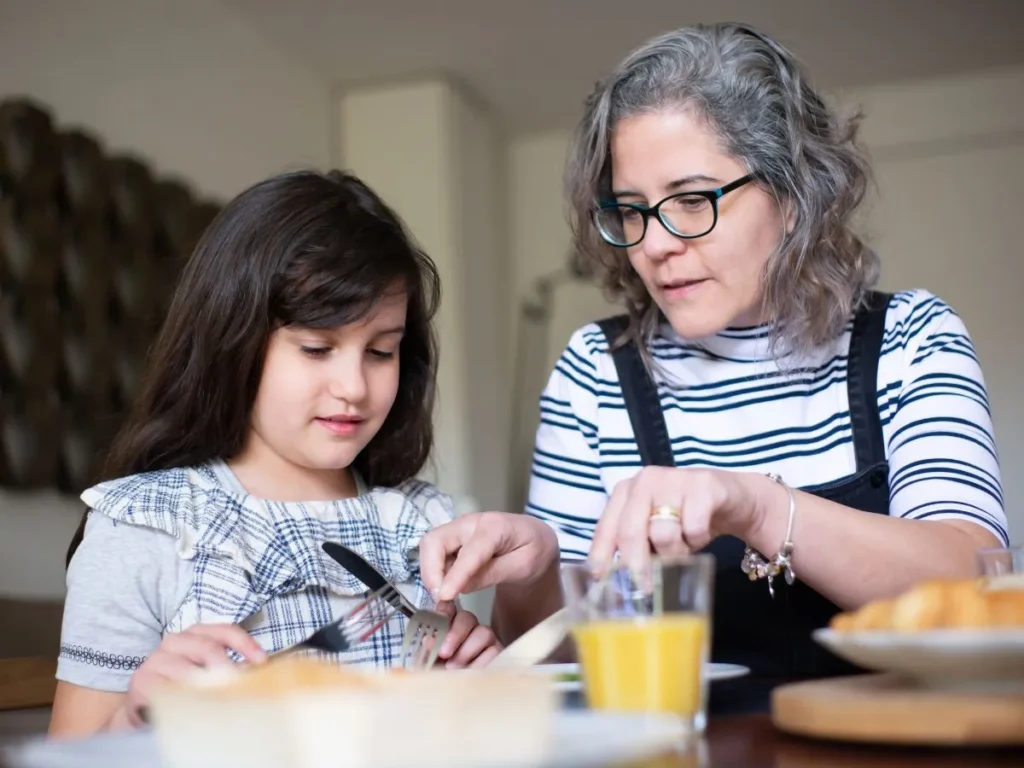
D. Asking Politely for Items
Teach kids to ask for items politely rather than reaching across the table or grabbing things without permission. Encourage them to use phrases like “May I please have the salt?” or “Could you pass the bread, please?”
E. Chew with Mouth Closed
Chewing with their mouths closed is a basic table manner that kids should be reminded of regularly. Not only is it more polite and considerate to others, but it also helps prevent food from being seen while chewing.
F. Using Napkins Appropriately
Teach children to use their napkins properly to wipe their mouths and hands as needed. Remind them to place their napkin in their lap before eating and to avoid using it as a toy or wiping their face excessively.
G. Excusing Oneself from the Table
Encourage kids to ask for permission before leaving the table, whether it’s to use the restroom or retrieve something from another room. Remind them to say “Excuse me” when leaving and returning to the table.
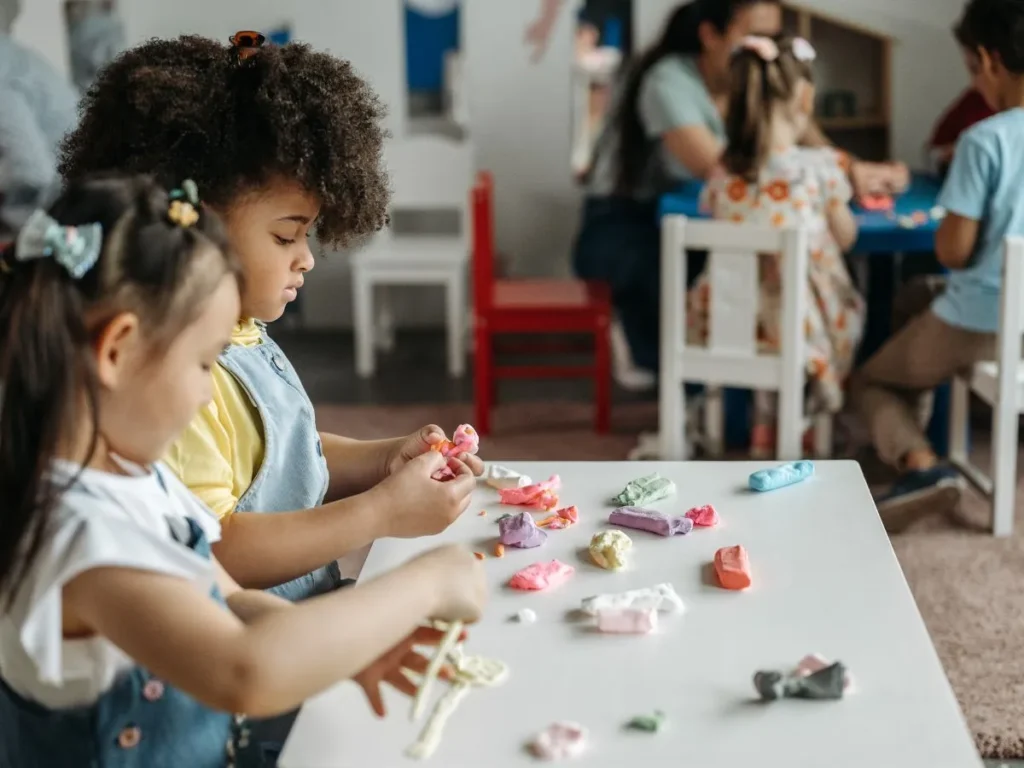
H. Being Considerate of Others
Instill the value of consideration and empathy in children by teaching them to be mindful of others’ needs and preferences during mealtime. Encourage them to offer to help set the table, serve food, or clear dishes when appropriate.
I. Keeping Elbows off the Table
Teach kids to keep their elbows off the table while eating, as this posture is considered rude and can be disruptive to others. Encourage them to sit up straight and keep their hands in their laps when not using utensils.
J. Avoiding Reaching Across Others
Remind children to ask for items that are out of reach rather than reaching across others or leaning over the table. Encourage them to use polite language when requesting items and to wait patiently for them to be passed.
By teaching these ten top table manners to kids, parents and caregivers can help instill important values of respect, consideration, and politeness while fostering a positive dining experience for the entire family.
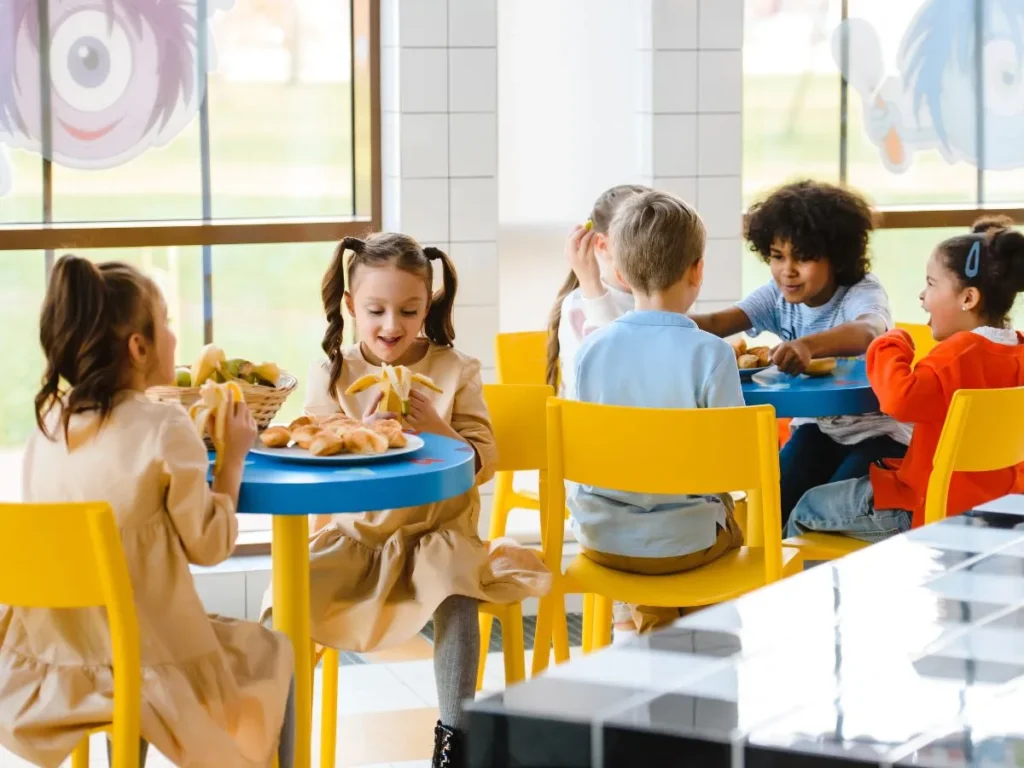
What is Considered Bad Manners at the Dinner Table?
Teaching proper table manners to kids is essential to fostering a pleasant dining experience. However, it’s equally important to address what constitutes bad manners at the dinner table. Instilling an understanding of these behaviors helps children navigate social situations with grace and respect. Below are five common examples of bad manners that children should be discouraged from displaying during mealtime.
Talking with Food in the Mouth
One of the most commonly frowned upon behaviors at the dinner table is talking with food in the mouth. Not only is it unappetizing for others to witness, but it can also be a choking hazard. Children should be reminded to finish chewing and swallowing their food before engaging in conversation.
Interrupting Others while They’re Speaking
Interrupting others while they’re speaking is a sign of disrespect and poor manners. Children should be encouraged to listen attentively to others and wait for an appropriate pause in the conversation before speaking. Interrupting can disrupt the flow of conversation and make others feel disregarded.
Playing with Utensils or Food
Playing with utensils or food is another behavior that is considered bad manners at the dinner table. Children should be taught to handle their utensils and food with respect, using them for their intended purpose rather than as toys. Playing with food can be messy and distracting for others, and it may also lead to food waste.
Making Negative Comments about the Meal
Making negative comments about the meal is not only impolite but also hurtful to the person who prepared it. Children should be taught to express gratitude for the food they are served, even if it’s not their favorite. Encourage them to find something positive to say, such as complimenting the flavor or presentation.
Leaving the Table without Permission
Leaving the table without permission is considered bad manners as it disrupts the flow of the meal and may inconvenience others. Children should be reminded to ask for permission before leaving the table, whether it’s to use the restroom, retrieve something, or attend to another matter. Excusing oneself before leaving shows consideration for others and helps maintain a respectful dining atmosphere.
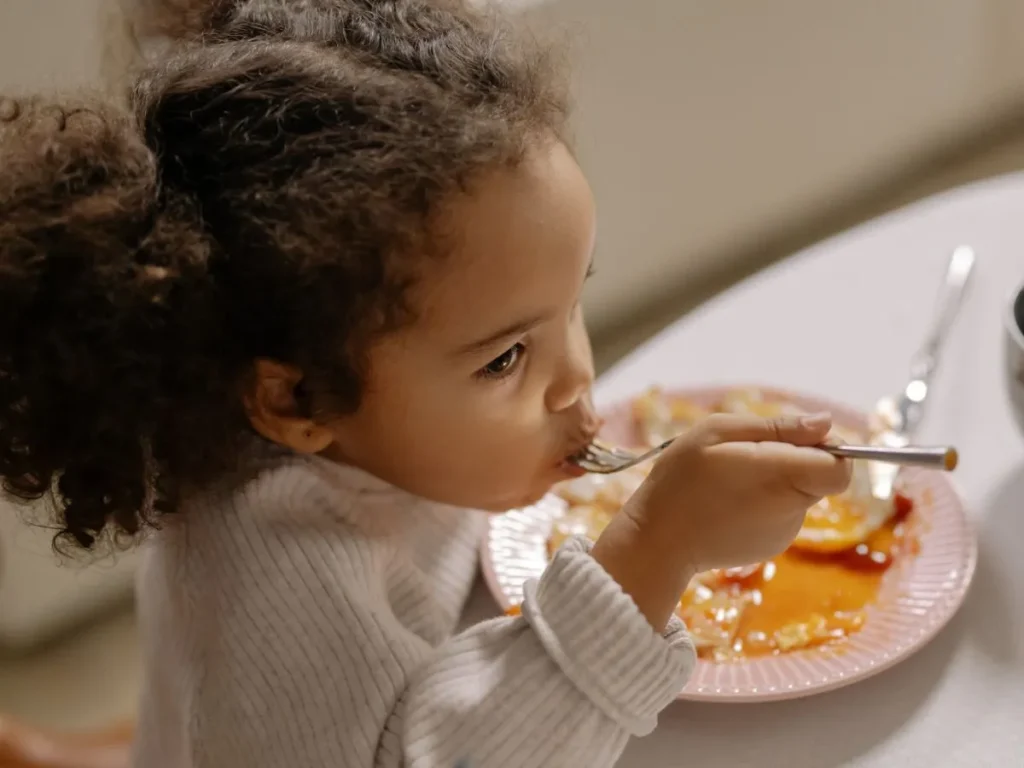
How Can I Improve My Child’s Table Manners?
Improving table manners for kids requires patience, consistency, and a positive approach. As parents and caregivers, there are several strategies you can employ to help your child develop good dining etiquette and behaviors. Here are four effective ways to improve your child’s table manners.
Lead by Example: Children learn by observing the behaviors of those around them, so it’s essential to lead by example when it comes to table manners. Demonstrate proper dining etiquette yourself by sitting up straight, using utensils correctly, and engaging in polite conversation. By modeling good behavior, you provide a clear example for your child to emulate and reinforce the importance of table manners in your household.
Provide Consistent Reminders and Gentle Corrections: Consistency is key when it comes to teaching table manners for kids. Provide gentle reminders and corrections as needed during mealtime, focusing on one or two specific behaviors at a time. For example, if your child forgets to use a napkin, gently remind them to do so without scolding or shaming. Consistent reinforcement helps reinforce expectations and encourages your child to develop good habits over time.
Create a Positive Dining Atmosphere: Foster a positive and welcoming atmosphere during mealtime to encourage your child’s engagement and participation. Set the tone for a pleasant dining experience by creating a calm and relaxed environment, free from distractions such as electronic devices or television. Use mealtime as an opportunity for family bonding and conversation, and emphasize the importance of enjoying each other’s company while sharing a meal together.
Practice Patience and Praise Progress: Improving table manners takes time and practice, so it’s essential to practice patience and offer praise for your child’s efforts and progress. Acknowledge and celebrate small victories, such as remembering to say “please” and “thank you” or using utensils properly. Positive reinforcement helps motivate your child to continue working on their table manners and reinforces the value of good behavior.
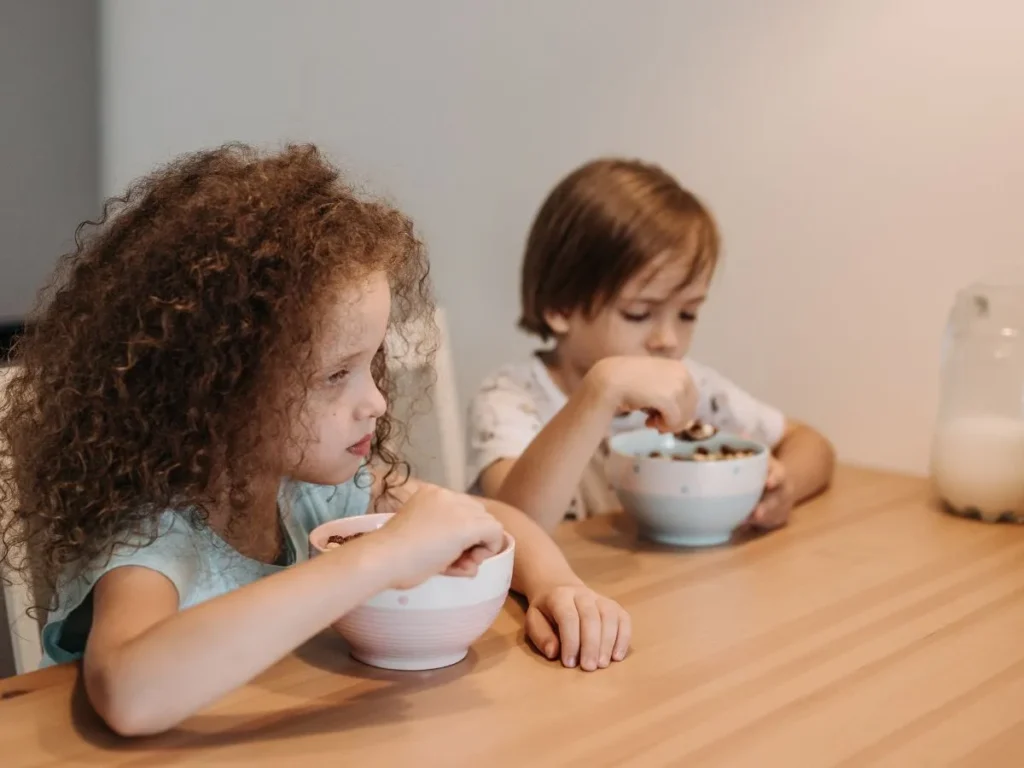
Basic Table Manners Every Kid Should Know
Teaching table manners for kids is a valuable investment in their social development and overall upbringing. By instilling these basic etiquettes early on, parents and caregivers lay the foundation for polite and respectful behavior in various social settings. Below are four fundamental table manners that every kid should know and practice regularly.
Saying “Please” and “Thank You”
Expressing gratitude is a cornerstone of good manners, and children should be taught to say “please” when making requests and “thank you” when receiving something. Encourage kids to use these polite phrases not only at the dinner table but also in everyday interactions, whether it’s asking for a glass of water or receiving a compliment.
Using a Fork and Knife Correctly
Proper utensil use is an essential aspect of table manners for kids. Teach children how to hold their fork and knife correctly and demonstrate the appropriate way to cut and eat food. Encourage them to use their utensils gracefully and avoid using their hands whenever possible, except for foods like bread or finger foods.

Waiting for Everyone to be Served Before Starting to Eat
Waiting for everyone to be served before starting to eat demonstrates patience and consideration for others. Children should be taught to wait until everyone at the table has been served before taking their first bite. This ensures that everyone can enjoy the meal together and no one feels left out or rushed.
Keeping Conversations Pleasant and Appropriate
Encourage children to keep conversations pleasant and appropriate during mealtime. Remind them to avoid topics that may be controversial or sensitive and to speak respectfully to others. Encourage active listening and discourage interrupting or talking over others, fostering a respectful and harmonious dining atmosphere.
Fun Ways to Teach Table Manners to Kids
Instilling good table manners for kids doesn’t have to be a dull or tedious task. By incorporating fun and interactive activities into the learning process, parents and caregivers can make teaching manners an enjoyable experience for children. Below are four creative and engaging ways to teach table manners to kids while having fun.
Role-playing Games
Role-playing games offer an interactive way for children to learn and practice table manners in a playful setting. Parents can create scenarios that mimic real-life dining situations and assign roles to family members or stuffed animals. For example, children can take turns being the host, the guest, or the server, and practice using polite phrases, proper utensil use, and other table manners during the game. This hands-on approach allows kids to actively participate in the learning process and reinforces good manners in a fun and engaging way.

Storytelling with Characters Who Exhibit Good Manners
Storytelling is a powerful tool for teaching children valuable lessons, including table manners. Parents can read or create stories featuring characters who exhibit good manners and demonstrate the importance of polite behavior at the dinner table. Children can relate to these characters and learn from their experiences, making the lessons more memorable and impactful. Encourage kids to identify the table manners displayed in the stories and discuss how they can apply them in their own lives.
Incorporating Games and Activities During Mealtime
Mealtime can be transformed into a fun and educational experience by incorporating games and activities that reinforce table manners. Parents can create table manners-themed scavenger hunts, where children search for hidden objects related to proper dining etiquette. Another idea is to play “manners bingo,” where kids mark off squares on a bingo card when they observe someone demonstrating good manners at the table. These games not only make learning enjoyable but also encourage active participation and engagement during mealtime.
Creating a “Manners Challenge” with Rewards
Turn teaching table manners into a fun challenge by creating a “manners challenge” with rewards for participation and achievement. Parents can set daily or weekly goals for children to practice specific table manners, such as using utensils properly, saying “please” and “thank you,” or waiting turns to speak. Children can earn points or stickers for each successful completion of a manners task, and accumulate rewards for reaching certain milestones. This gamified approach not only motivates kids to practice good manners but also reinforces positive behavior through incentives and recognition.
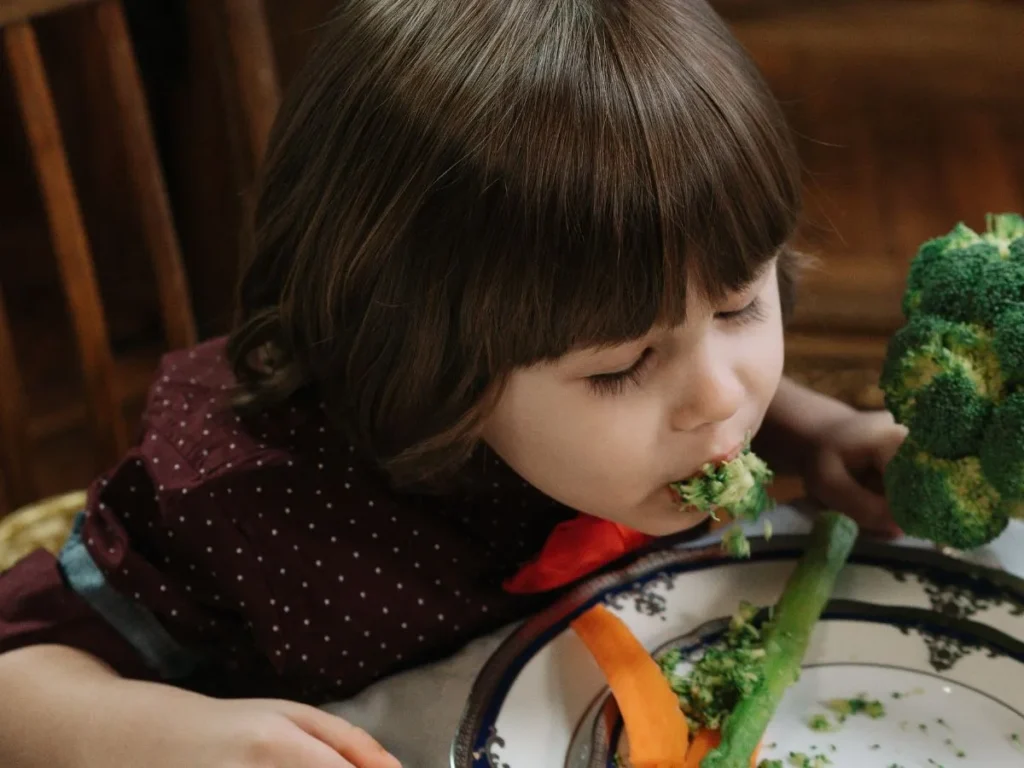
Also Read: Etiquette For Using Restaurant Wi-Fi
Conclusion
Teaching table manners for kids is a crucial aspect of their upbringing, with far-reaching benefits that extend beyond the dinner table. As we wrap up our discussion, let’s recap the importance of instilling proper dining etiquette in children, encourage the incorporation of fun and consistency in teaching manners, and reinforce the long-term benefits for children’s social development.
Incorporating fun and consistency into the teaching of table manners can make the learning process enjoyable for children. By using creative activities such as role-playing games, storytelling, incorporating games and activities during mealtime, and creating manners challenges, parents and caregivers can engage children in the learning process and reinforce good manners in a positive and interactive way. Consistency is key in reinforcing desired behaviors, so parents should make an effort to consistently remind and correct children’s manners during mealtime while also making it a fun and enjoyable experience.
The long-term benefits of teaching table manners for kids are significant and far-reaching. By learning and practicing good manners at the table, children develop important social skills such as communication, empathy, and consideration for others. These skills are essential for building positive relationships, both now and in the future. Additionally, children who exhibit good manners are more likely to succeed academically, professionally, and socially, as they are viewed positively by peers, teachers, and potential mentors. By instilling proper table manners in children, parents and caregivers set them up for success and fulfillment in all aspects of their lives.
In conclusion, teaching table manners for kids is a valuable investment in their social development and overall well-being. By emphasizing the importance of good manners, incorporating fun and consistency into the teaching process, and reinforcing the long-term benefits for children’s social development, parents and caregivers can help children cultivate respect, consideration, and politeness in their interactions with others. With proper table manners, children can navigate social situations with confidence, build meaningful relationships, and thrive in various aspects of their lives.
